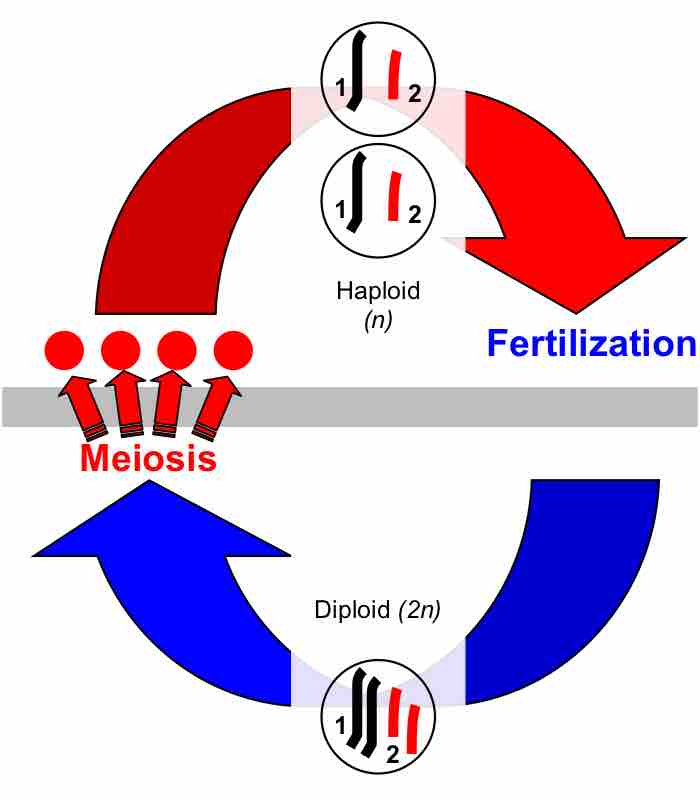The Evolution of Reproduction
Several competing scientific hypotheses have been proposed to explain the evolution of sexual reproduction. All sexually-reproducing eukaryotic organisms derive from a common ancestor that was a single-celled eukaryotic species. Many protists reproduce sexually, as do multicellular plants, animals, and fungi. However, there are a few species which have secondarily lost this feature. The evolution of sex contains two related, yet distinct, themes: its origin and its maintenance. However, since the hypotheses for the origins of sex are difficult to test experimentally, most current work has been focused on the maintenance of sexual reproduction.
Once multicellular organisms evolved and developed specialized cells, some also developed tissues and organs with specialized functions. The evolution of reproductive organs arrived with the development of gonads that produced sperm and eggs . These cells develop through meiosis, an adaption of mitosis, which reduced the number of chromosomes in each reproductive cell by half, while increasing the number of cells through cell division . The development of specialized gonads to produce sperm and egg was a major step in the evolutionary process.

Meiosis
The development of sperm and eggs occurs via the process of meiosis which reduces the number of chromosomes in each cell by half.
Sperm fertilizing an egg
The evolution of sex-specific gonads led to the development of sperm (male) and eggs (female). When fertilized, if the conditions are favorable, the egg may develop into a new organism.
An early development in reproduction occurred in the Annelids. These organisms produce sperm and eggs from undifferentiated cells in their coelom, storing them in that cavity. When the coelom becomes filled, the cells are released through an excretory opening or by the body splitting open. Further evolution of reproductive systems resulted in the development of reproductive systems that are sex specific. In these more advanced systems, sperm is made in the testes and then travels through coiled tubes to the epididymis for storage. Additionally, in these more advanced systems, eggs are matured in the ovary; when released, they travel to the uterine tubes for fertilization. These types of reproductive systems developed in insects (compared to annelids which have a coelom for storage). Specifically, in the insect reproductive system, a specialized sac developed, called a spermatheca, which is used to store sperm for later use, sometimes up to a year. This was a key development since fertilization in insects can be timed with environmental or food conditions that are optimal for offspring survival.
Vertebrates have similar structures (i.e., gonads that specialize in sex cell production) with a few differences in their reproductive systems. Non-mammals, such as birds and reptiles, have a common body opening, called a cloaca, for the digestive, excretory, and reproductive systems. Coupling between birds usually involves positioning the cloaca openings opposite each other for transfer of sperm. In mammals, there are separate openings for the systems in the female and a uterus for support of developing offspring. Depending on the type of species, there are differences in the uterus. In species that produce large numbers of offspring, the uterus has two chambers. In other species that produce one offspring, such as in primates, there is a single uterus.
Another development in the evolution of reproduction is the means by which sperm is transferred. During reproduction, sperm transfer from the male to the female ranges from releasing the sperm into the watery environment for external fertilization, to the joining of cloaca in birds, to the development of a penis for direct delivery into the female's vagina in mammals. All of these methods of sperm transfer represent the varying ways reproduction has evolved and become specialized to specific organisms.